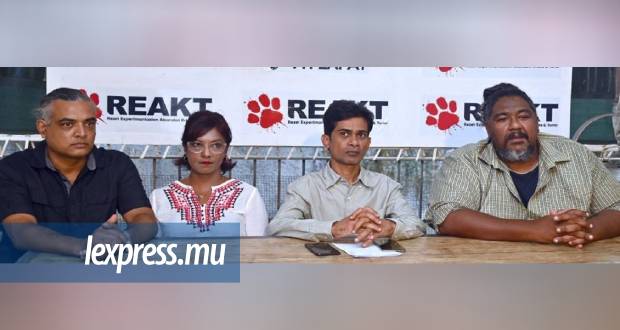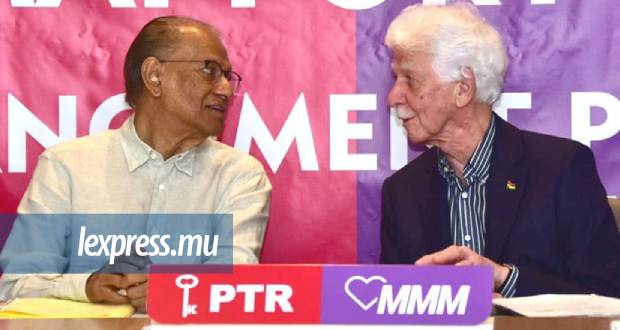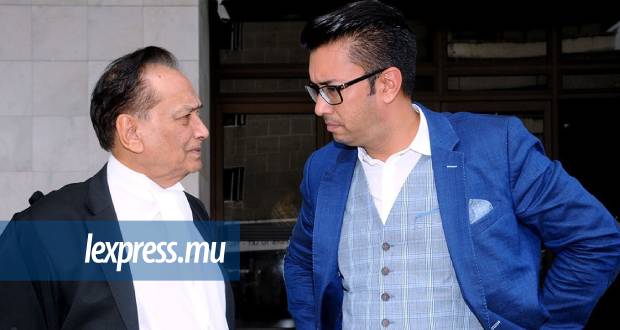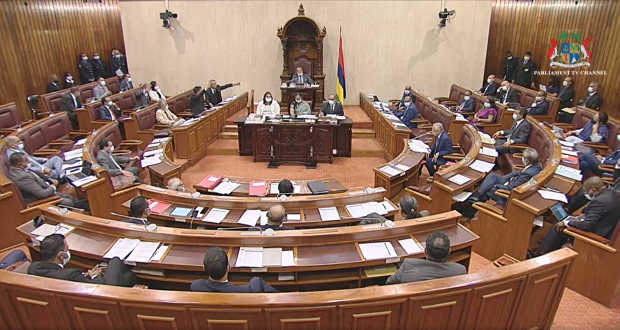Publicité
Deconstructing the Economic Mission Statement
Par
Partager cet article
Deconstructing the Economic Mission Statement

The packaging was far superior to the product that was marketed, says the author about the Economic Mission statement delivered by Prime minister Sir Anerood Jugnauth last Saturday.
After the Government Programme which was presented on January 27, 2015 and the Budget Speech, on March 23, which was meant to lay the foundation for the “second economic miracle”, the Prime Minister delivered the much heralded “Economic Mission Statement” on Saturday August, 22.
This paper seeks to go beyond the hype created around this event and looks at the substance of what was actually said and the questions that arise from this.
1. As I stand here to address you in this Conference Centre, at the heart of the Cyber City, an ambitious project I initiated in 2001, I can feel the emotion within me for having translated one of my dreams into a formidable economic asset for the present and future generations.
The PM chose to start his speech with a statement that reopens the debate about who initiated the Cyber City Project – a debate which many believed had been put to rest by Prime Minister Manmohan Singh who confirmed during his visit to Mauritius that the Labour Government had already started talks with India on this project before the 2000 elections. PM Jugnauth now says that not only he had initiated the project in 2001 but that this had been “one of HIS dreams”.
2. And I can say with pride that Mauritius has achieved a lot under my leadership.
Though it is rather common for visiting dignitaries to pay tribute to the progress achieved in the host country under the “leadership” of the current Head of Government/State as this is standard diplomatic custom, it is, to say the least, rather unusual to hear a sitting Head of Government paying tribute to what has been achieved under his own “leadership”.
He assumes that he has provided leadership whilst most leaders would rather leave it to others to judge whether they have actually done so.
The constant reference to a second economic miracle assumes that (a) there was a first one and (b) that Anerood Jugnauth deserves the credit for it.
These assumptions are made by Anerood Jugnauth himself and his party. Future economists and historians who will be able to distance themselves from the hurly burly of present day politics will determine the extent to which the economic diversification policies, the investment in infrastructure, free secondary education and the painful structural adjustment measures adopted before 1982 led to the relative economic surge of the mid 80’s. Whilst the jury is still out on this, the present satiated babble on the SECOND economic miracle may turn out to be one of those myths politicians thrive on.
3. This reminds me of 1982, when I first took the reins of the country as Prime Minister. My Government, at that time, inherited a chaotic situation, an economy bleeding to death, huge debt burden on the head of each inhabitant and massive unemployment.
Misery was the order of the day.
………………….
Today, we are in a pretty much similar situation as in 1982, with an urgent need to give a new drive to our economic model across all sectors.
Leaving aside the propriety of this highly partisan statement about 1982 whilst setting out a Mission Statement for 2015- 2030 before a non-partisan audience, the Prime Minister went on to say that, “Immediately, upon taking office at the end of last year, we took the bulls by their horns. We endeavoured in the first instance to alleviate the burden of the poor, the downtrodden and our workers.
We increased pensions substantially and brought the Basic Retirement Pension to Rs 5,000 monthly. We gave an across the board salary compensation of Rs 600.
If the situation today is similar to what obtained in 1982 when the situation was “chaotic” and “the economy was bleeding to death” how did the Government manage IMMEDIATELY after taking office to find billions of rupees to pay for the increased pensions and the salary compensation?
4. The 2015-2016 Budget has set the foundation for Mauritius to propel itself towards its next phase of development that will be driven by innovation.
………………
We have already embarked on our economic journey with confidence and zeal.
If the 2015-2016 Budget had already set the foundation for Mauritius to propel itself towards its next phase of development and we have ALREADY embarked on our economic journey with confidence and zeal, then why is a Vision Statement being delivered now and a committee being appointed now to work on a blueprint?
5. We are leveraging on one of our largest asset base which is our Exclusive Maritime Economic Zone to develop our Ocean industry. I see extensive possibilities in this field.
…………….
Moreover, a National Ocean Council has been set up to drive and implement projects as regards the Ocean Economy.
It is not clear why the PM’s vision is limited to the EEZ and he decided to leave out the Continental Shelf. In any case an Ocean Economy vision goes much beyond the natural or mineral resources in an EEZ.
The previous Government had published a Roadmap on the Ocean Economy and had appointed a National Task Force under the chairmanship of the Secretary to Cabinet to implement the Roadmap. The PM has rechristened the National Task Force as National Ocean Council.
6. The DoubleTaxation AvoidanceTreaty with South Africa has been ratified on 25 May 2015 to bring more clarity, substance and predictability to international investors using Mauritius as a hub to invest in Africa.
The PM did not explain how the amendments to the Treaty with South Africa will bring “more clarity, substance and predictability” to INTERNATIONAL INVESTORS using Mauritius as a hub to invest in AFRICA. How will the amended treaty with South Africa encourage more INTERNATIONAL INVESTORS to use Mauritius to invest in AFRICA.
7. Negotiations with India on the tax treaty will be finalised shortly, to provide certainty and substance to investors. As a result of other initiatives implemented by my Government, the industry is already experiencing tangible growth. From January to the end of July 2015, the FSC issued 1,680 licenses, which represents a 10% increase compared to 2014.
The PM stated on August 22 that negotiations with India will be finalised shortly. He needs to explain why Cabinet took note on July 3 that the delegation led by the Minister of Financial Services, Good Governance and Institutional Reforms to India has successfully finalized the pending issues on the Double Taxation Avoidance Convention, as well as a protocol amending the DTA and Cabinet AGREED to the signing of the protocol following the completion of internal procedures by both sides.
How can Government note on July 3 that the Protocol amending the treaty has been successfully finalized and AGREE to the signing of the Protocol on completion of internal formal procedures and then state on August 22, that negotiations with India will be finalized shortly. Will the PM say what are the “other initiatives implemented by the Government” which have led to tangible growth in the industry?
Furthermore, will the PM give a breakdown of the 1,680 Licences issued by the FSC since January 2015 and state in particular how many of these Licences have been issued to GBC2’s and consequently how significant is this in terms of “tangible growth” of the “INDUSTRY”?
8. Indeed, Mauritius is appealing as an investment destination. There are, right now, some 40 major private sector investment projects to the tune of 183 billion rupees, of which foreign direct investments represent 140 billion rupees. These projects will require our full attention in order to accelerate their implementation. They have the potential of creating 100,000 new direct and indirect jobs within the coming five years.
The PM talks of 40 major investments and then goes to talk about “THESE PROJECTS” and follows up with the sentence beginning with “THEY” which can only mean “THESE PROJECTS”.
It is therefore clear that what he means is that THESE 40 projects have the potential of creating 100,000 new jobs in the coming five years. He went on to say “The distribution of these 100,000 new jobs is as follows:”
This can only mean that the distribution applies to the 40 Projects only. Surely there will be OTHER projects in the coming five years and many more hundreds of thousands of jobs will be created than the 100,000 to be generated by the mere 40 projects.
9. Over and above those private sector employment perspectives, in the public sector, I can state that more than 7,000 vacancies will be filled in the 2015-2016 period.
The private sector representatives are reported to have applauded the PM’s Vision Statement. If this is so, one can understand that any attempt to refocus on the economy would be welcome by the private sector given the “climat de morosité” which so many people had been talking about, but it would be surprising to many that the private sector anywhere would welcome the expansion by over 10 % of public sector personnel in a single financial year.
CONCLUSION
The event was billed well in advance as a major “Economic Statement”, a “Vision Statement 2030” etc. Indeed the PM’s statement is available on the PMO’s website under the heading “The economic mission statement of the Rt Hon Prime Minister”. However, significantly, the actual heading on the text of the PM’s statement is:
“SPEECH OF THE RIGHT HONOURABLE SIR ANEROOD JUGNAUTH, GCSK, KCMG, QC, PRIME MINISTER OF THE REPUBLIC OF MAURITIUS AT THE LAUNCH OF THE HIGH POWERED COMMITTEE ON ACHIEVING THE SECOND ECONOMIC MIRACLE AND VISION 2030.” (underlining is mine).
Did the PM’s spin doctors oversell the event? Or is it a case of misselling?
Does the actual heading on the text of the statement reflect more accurately what the event was all about?
The main announcement was indeed the setting up of a joint committee with the private sector to monitor and facilitate implementation of private sector projects. This was welcome by the private sector and rightly so. Otherwise, the statement was an opportunity to make broad political swipes at the PM’s opponents, laud the PM’s own leadership and set targets for the next five years. Vision 2030 is mentioned only ONCE in the statement: “the High-Powered Committee under my Chairmanship will oversee the preparation of a Blueprint for Vision 2030”. The rest was more like a pot pourri of sound bites stitched together rather fatuously.
However the PM’s coach did a better job with the autocue. So did the people who worked on the slides and the clips though unfortunately for them the packaging was far superior to the product they were marketing.
The dream team that drafted the statement was probably right after all. They got the heading to the PM’s statement right. The event was really about the launch of the high-powered committee that will oversee the blueprint for Vision 2030. The attention of the whole nation was mobilized for that: launch of a Committee to work on a Blueprint for an as yet undefined vision.
Pour la Vision, il faut repasser….
Publicité
Les plus récents






